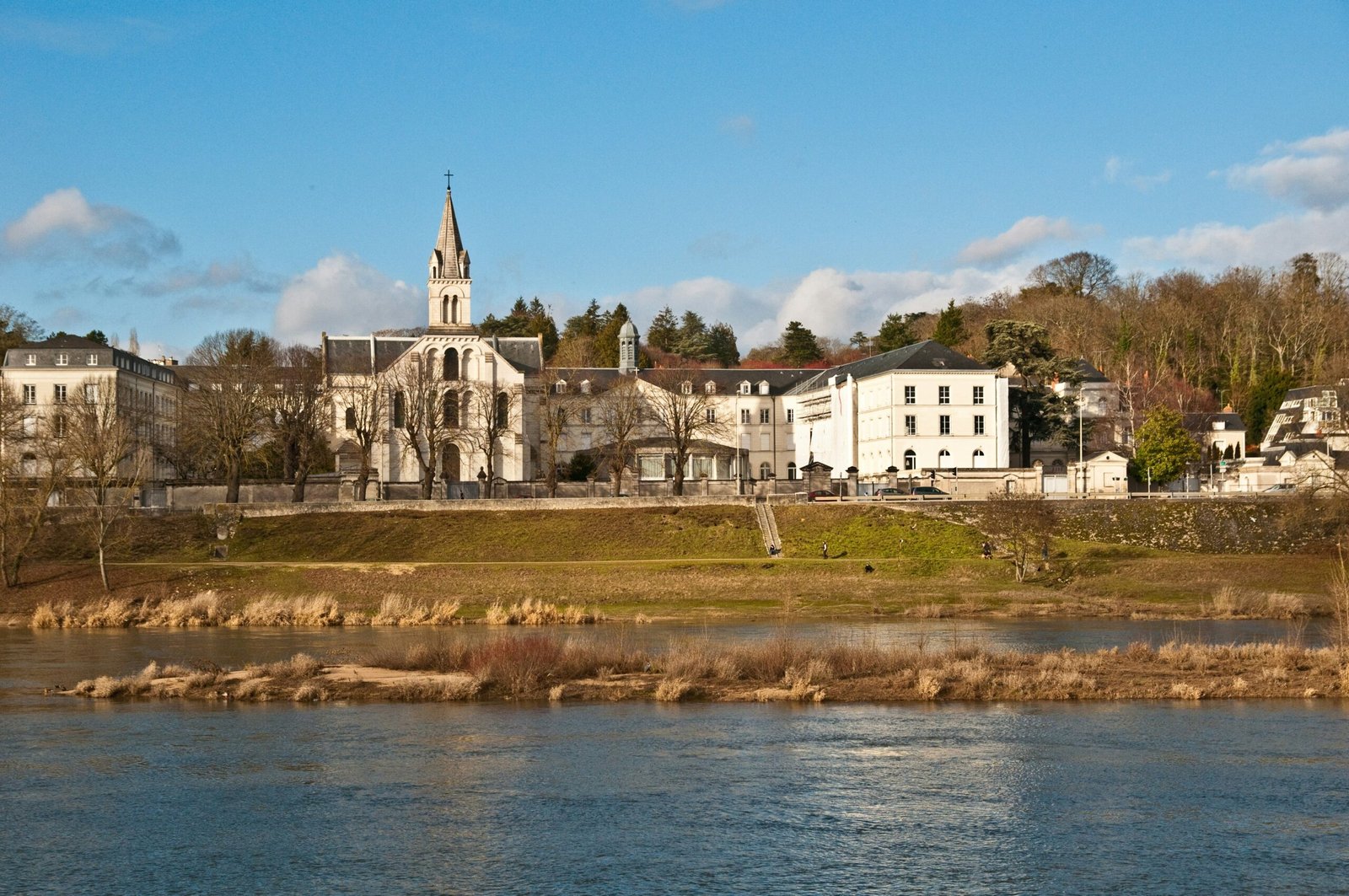
Introduction to Eco-Reserves
Eco-reserves serve as vital sanctuaries dedicated to the preservation of the world’s tropical rainforests, which are known for their incredible biodiversity and ecosystems. Primarily established to conserve natural habitats, eco-reserves play a significant role in protecting endangered species and promoting the sustainable management of resources. The essence of an eco-reserve lies in its ability to maintain ecological integrity while allowing for regulated human activities that foster education and awareness among visitors.
The significance of eco-reserves extends beyond mere conservation; they act as essential buffers against the threats posed by deforestation, climate change, and urbanization. By protecting these critical environments, eco-reserves contribute to the stability of the global climate, as rainforests are integral to carbon sequestration and regulating atmospheric conditions. Furthermore, these protected areas enable biodiversity to thrive, offering refuge for numerous plant and animal species that may otherwise face extinction due to habitat loss.
In addition to their ecological contributions, eco-reserves encourage sustainable tourism practices. They provide visitors with the opportunity to engage with nature in a way that respects and benefits the local environment. Tourists can interact with the ecosystems and wildlife, gaining a deeper understanding of the importance of preservation efforts. This, in turn, fosters a sense of responsibility towards maintaining these ecosystems, which is crucial in the face of ongoing environmental challenges.
In summary, eco-reserves are indispensable in the fight for biodiversity preservation, sustainable tourism, and ecological balance. As we explore various eco-reserves around the world, it becomes evident how these protected areas uphold the intricate tapestry of life found within tropical rainforests and beyond.
The Breathtaking Biodiversity of Tropical Rainforests
Tropical rainforests represent one of the most diverse ecosystems on the planet, harboring an astonishing variety of plant and animal species. Estimates suggest that over half of the world’s plant and animal species can be found in these lush environments, which cover only about 6% of the Earth’s land surface. This remarkable biodiversity can be attributed to the warm, humid climate, abundant rainfall, and complex layering of the forest structure, which creates a multitude of niches that support a wide array of life.
The flora of tropical rainforests includes towering trees, vibrant flowering plants, climbing vines, and a multitude of fungi. Many of these plants exhibit unique adaptations, such as broad leaves for optimal sunlight absorption and thick bark to withstand harsh weather. Some species, like the rubber tree and mahogany, are economically significant, while others contribute to the ecological integrity of the forest. For instance, the dense canopy formed by the upper branches provides habitat for various birds, insects, and mammals, while the understory hosts several insects, reptiles, and small mammals adapted to lower light conditions.
In addition to plants, tropical rainforests are home to an incredible variety of fauna. These ecosystems boast a huge number of mammal, bird, reptile, amphibian, and insect species, many of which are endemic and can only be found in specific rainforests. The interactions among these species create intricate food webs and contribute significantly to local and global ecological balance. Predators, prey, and pollinators all play essential roles in maintaining the health of the ecosystem. Eco-reserves, established within these biodiverse areas, serve as sanctuaries for many species that are threatened by habitat loss and climate change, providing crucial habitats for their survival and allowing researchers to study and conserve this unique biodiversity effectively.
Top Eco-Reserves to Visit
If you are considering embarking on an eco-tourism adventure, numerous eco-reserves throughout the world offer unique opportunities to explore tropical rainforests and their rich biodiversity. Among the most renowned destinations is the Amazon Rainforest, spanning across several countries in South America, including Brazil, Peru, and Colombia. This vast jungle is home to more species of plants and animals than any other terrestrial ecosystem. Visitors can experience guided tours that showcase the vibrant flora and fauna, while also learning about the indigenous cultures that inhabit the area.
Another noteworthy destination is Costa Rica, which is celebrated for its extensive network of national parks and protected areas. The Monteverde Cloud Forest Reserve, in particular, is famous for its unique cloud cover that supports a diverse range of species, including the resplendent quetzal bird. Other essential sites in Costa Rica include Manuel Antonio National Park and Corcovado National Park, both offering a variety of ecosystems and outdoor activities, such as hiking and wildlife observation.
Madagascar is also an eco-tourism hotspot, famous for its endemic species, including lemurs and various types of baobab trees. The Andasibe-Mantadia National Park is a prime location for those looking to explore Madagascar’s exceptional biodiversity, with lush rainforests and opportunities to encounter wildlife in its natural habitat. Furthermore, the Tsingy de Bemaraha National Park is known for its remarkable limestone formations and variety of species unique to the island.
These eco-reserves not only provide unforgettable experiences for nature lovers and adventure seekers but also emphasize the importance of conservation efforts worldwide. Tourists visiting these areas contribute to the preservation of essential ecosystems while enjoying the beauty and complexity of these remarkable environments.
Activities to Enjoy in Eco-Reserves
Visiting eco-reserves offers an array of activities that allow individuals to immerse themselves in the natural beauty of tropical rainforests. One of the most popular activities is hiking, which enables visitors to traverse diverse terrains while observing rich flora and fauna. These trails are often designed to showcase the unique ecosystems within the reserve, allowing trekkers to experience the breathtaking scenery up close. Hiking not only fosters physical fitness but also enhances the connection with nature, as each step can reveal something new and unexpected.
Another delightful activity is birdwatching. Tropical rainforests are home to a myriad of bird species, many of which can be found nowhere else on Earth. Equipped with binoculars and field guides, enthusiasts can spot resplendent quetzals, toucans, and other stunning birds, providing a unique opportunity for photography and research. This serene experience encourages appreciation for avian biodiversity and promotes wildlife conservation efforts.
Guided nature walks offer yet another way to explore eco-reserves. Led by knowledgeable guides, these walks provide valuable insights into the ecology of the rainforest, highlighting the interconnectedness of various species and their habitats. Through this educational lens, participants gain a deeper understanding of the environment and the importance of preserving it for future generations.
Wildlife photography is also a favored pursuit within these reserves. Capturing the vibrant wildlife in its natural habitat can be both gratifying and inspiring. Visitors are encouraged to engage in eco-friendly practices by minimizing their impact on the environment; this may include using biodegradable products, maintaining a safe distance from animals, and keeping noise levels low. By adopting such responsible practices, eco-tourists can ensure that their adventures do not disrupt the delicate ecosystems they cherish.
Cultural Encounters in Tropical Rainforests
Visiting eco-reserves in tropical rainforests offers a unique opportunity to engage with the rich cultural tapestry woven by indigenous communities that inhabit these regions. These communities have lived in harmony with the rainforest for generations, developing an intricate relationship with the environment that shapes their traditions, beliefs, and ways of life. Travelers can explore this aspect of rainforest culture by participating in guided tours led by local inhabitants, where stories about their ancestral heritage and sustainable living practices are shared.
The deep spiritual connection these communities have with the rainforest is reflected in their cultural expressions, including music, dance, and traditional crafts. For instance, visitors may witness vibrant performances that depict ancient myths and rituals, providing insight into the worldviews of these indigenous populations. Engaging with local artisans also allows travelers to appreciate the craftsmanship behind handmade goods, such as intricate beadwork or woven baskets, which often tell stories about their natural surroundings.
It is vital for visitors to approach these cultures with respect and humility, recognizing the significance of maintaining local traditions while also supporting the communities economically. Sustainable tourism can play a critical role in preserving indigenous ways of life by promoting art, music, and cultural practices that may otherwise face extinction due to globalization and modern pressures. By choosing to participate in activities that are ethically managed and culturally sensitive, tourists can contribute to the protection of these fragile cultures.
Through meaningful interactions with indigenous communities, travelers not only enrich their own experiences but also foster a greater appreciation for the challenges these groups face. The vibrant cultural encounters within eco-reserves ultimately encourage a shared commitment to conservation and sustainability in the face of changing global dynamics.
Conservation Efforts and Challenges
The conservation of tropical rainforests, which are among the most biodiverse ecosystems on the planet, is vital not only for maintaining environmental balance but also for preserving the unique species that inhabit these areas. Many organizations and initiatives are actively working to protect these invaluable eco-reserves from threats such as deforestation, climate change, and poaching. Initiatives often involve local communities, emphasizing the need for sustainable practices that benefit both the environment and the livelihoods of residents.
One of the prominent organizations involved in these conservation efforts is the Rainforest Alliance, which focuses on promoting sustainable land management practices. They provide training and resources to local farmers and businesses to encourage practices that preserve rainforest biodiversity. Additionally, the World Wildlife Fund (WWF) works globally to protect endangered species and their habitats through various conservation strategies, including advocacy and policy-making. Their efforts often include working directly with governments to create protected areas and enforce environmental regulations.
However, the challenges faced by these organizations are significant. Deforestation for agriculture, infrastructure development, and illegal logging continues to threaten rainforests. Furthermore, climate change exacerbates these issues, altering rainfall patterns and increasing the frequency of extreme weather events, which impacts local flora and fauna. Poaching of wildlife remains a critical issue, as the illegal wildlife trade threatens numerous species that play essential roles in their ecosystems.
Tourists visiting eco-reserves can contribute to these conservation efforts by supporting sustainable tourism practices. This includes choosing eco-friendly accommodations, participating in guided tours that promote environmental education, and donating to conservation organizations. By doing so, travelers help ensure that the natural beauty and biodiversity of tropical rainforests can be appreciated by future generations.
Sustainable Practices for Eco-Tourism
Eco-tourism offers a unique opportunity for travelers to engage with nature while contributing to conservation efforts and promoting sustainability. To ensure that your visit to an eco-reserve is both enjoyable and responsible, it’s essential to adopt certain practices that minimize your ecological footprint. One of the primary steps is to choose eco-friendly accommodations. Look for lodges or hotels that utilize renewable energy, implement water conservation practices, and support local communities. Many eco-friendly establishments are certified by environmental organizations, which can serve as reliable indicators of their commitment to sustainable tourism.
In addition to selecting appropriate lodging, travelers should prioritize minimizing their environmental impact while exploring. This can be achieved by utilizing public transportation, walking, or cycling when moving around the eco-reserve instead of relying on motorized vehicles. Such choices not only reduce carbon emissions but also provide a more intimate experience with the surroundings. Furthermore, it is crucial to respect the local wildlife and ecosystems by adhering to the “Leave No Trace” principles. This includes staying on marked trails, not feeding animals, and disposing of waste properly to maintain the natural habitat.
Supporting conservation initiatives is another key aspect of sustainable tourism. Many eco-reserves are involved in projects aimed at preserving local biodiversity and ecosystems. Tourists can contribute by participating in community-led programs or visiting conservation centers that educate visitors about the area’s flora and fauna. Additionally, purchasing handicrafts and goods made by local artisans can foster economic development while simultaneously protecting the cultural heritage of the region. By making informed decisions and actively engaging in sustainable practices, travelers can significantly impact the environment positively and help safeguard tropical rainforests for future generations.
Planning Your Eco-Reserve Tour
Embarking on an eco-reserve tour in tropical rainforests requires careful planning to ensure a fulfilling and safe experience. First, identifying the best times to visit is crucial. Typically, the dry season from June to October offers better accessibility and less humidity, making it ideal for exploration. However, some travelers may prefer the wet season, which, while wetter, enhances the rainforest’s vibrant beauty and attracts diverse wildlife. Researching the specific eco-reserve you wish to visit can provide additional insights regarding optimal travel times.
When preparing for your trip, packing appropriately is essential. A comprehensive packing list should include lightweight, breathable clothing suitable for humid conditions, sturdy hiking boots for rugged terrain, and a waterproof jacket to combat unexpected rain showers. Additionally, insect repellent and sunscreen are critical to ensuring comfort and protection from the sun and biting insects. Bringing along essentials such as a reusable water bottle, binoculars for birdwatching, and a field guide for the local flora and fauna will enrich the experience.
Finding reliable resources for bookings and guides will significantly enhance the adventure. Engaging with local tour operators who specialize in eco-tours can provide invaluable insights and personalized experiences. Many eco-reserves offer guided tours led by knowledgeable naturalists who can educate visitors about the unique ecosystem and support conservation efforts. It is advisable to read reviews and check recommendations from fellow travelers to ensure an informed choice.
Travel considerations are equally important, particularly regarding safety and health precautions. Vaccinations may be required for certain areas, so consulting with a healthcare provider prior to travel is recommended. Respecting nature and local communities is paramount; travelers should adhere to eco-friendly practices, such as minimizing waste and avoiding disruptive behavior to wildlife. By following these guidelines, you’re ensuring a meaningful and responsible eco-reserve adventure.
Conclusion: Embrace the Adventure and Conservation
In summary, the journey through eco-reserves offers an unparalleled opportunity to engage with the vibrant ecosystems that tropical rainforests harbor. These magnificent environments are not only rich in biodiversity but also serve as critical components of our planet’s health. By venturing into these pristine landscapes, travelers have the chance to witness firsthand the intricate relationships among flora and fauna, highlighting the delicate balance that sustains life.
Moreover, exploring eco-reserves fosters a deeper appreciation for nature, allowing individuals to connect with the sights, sounds, and scents of the rainforest. The adventure of eco-tourism provides unique experiences such as guided treks, wildlife watching, and visits to local communities that rely on these natural wonders for their livelihoods. As explorers, travelers can enjoy the thrill of discovering hidden treasures and majestic views that only the rainforest can provide.
However, it is essential to acknowledge that with exploration comes responsibility. By choosing eco-friendly travel options and supporting sustainable practices, visitors can play a crucial role in the conservation of these vital ecosystems. Responsible tourism not only minimizes environmental impact but also contributes to the well-being of local communities that depend on the natural resources of the rainforest for their existence. Through a shared commitment to preservation, we can ensure that future generations will also have the opportunity to experience the splendor and mystery of tropical rainforests.
As you embark on your own adventures in eco-reserves, remember that you are not just a visitor in these remarkable habitats but also a steward of nature. Embrace the adventure while being mindful of your impact, and together, let us contribute to the ongoing conservation efforts that protect our planet’s invaluable treasures.

